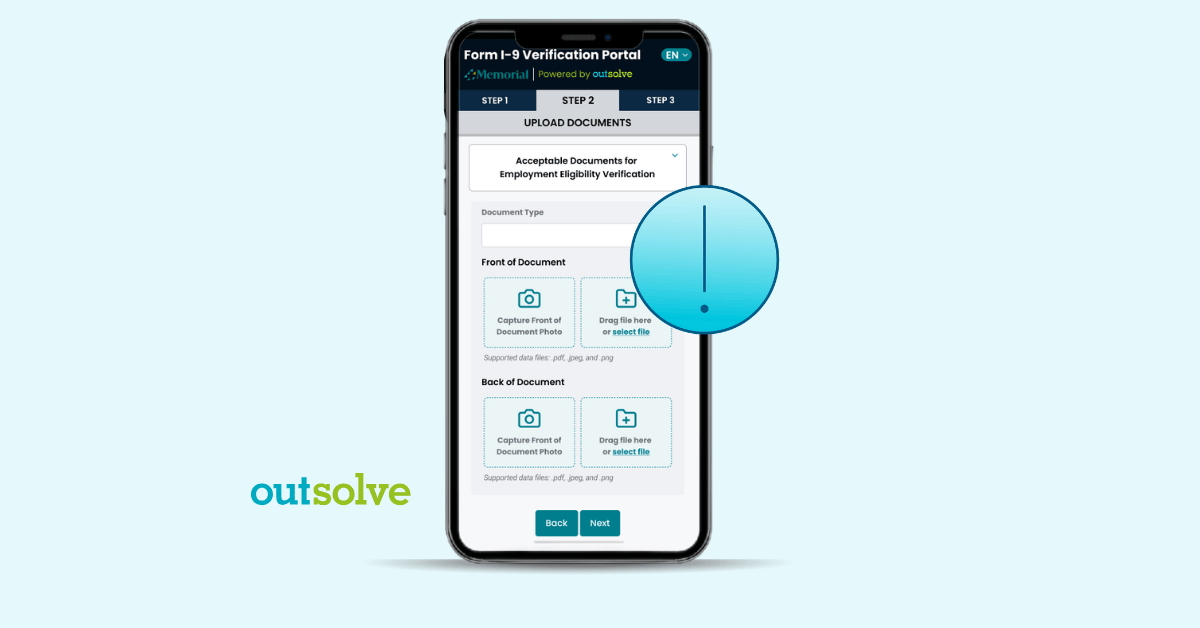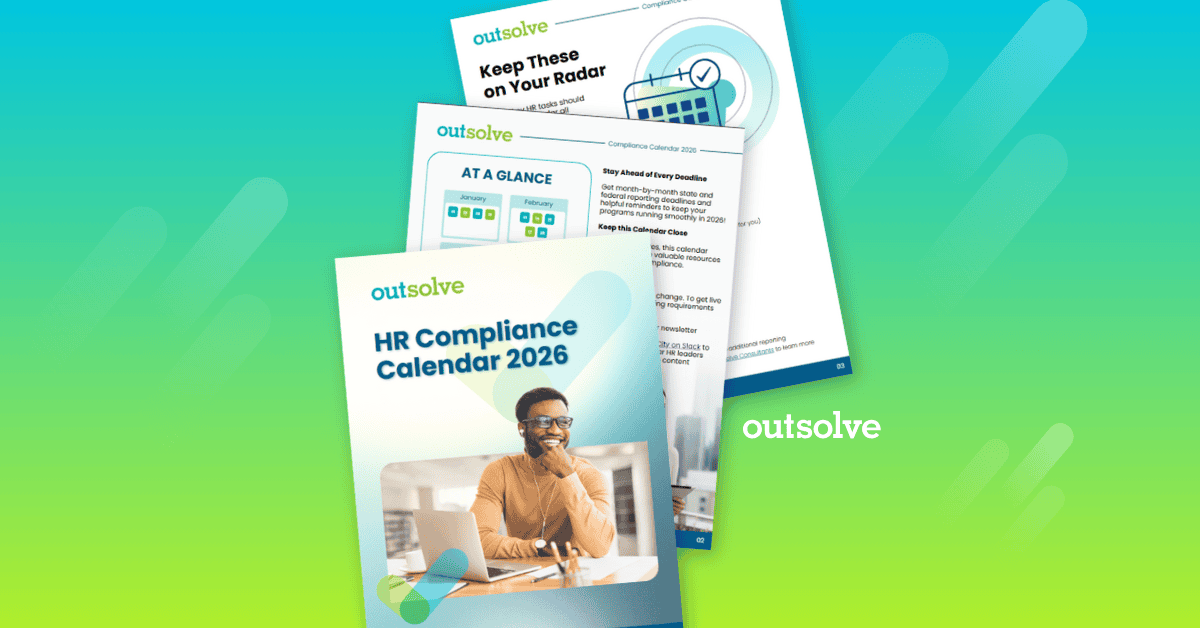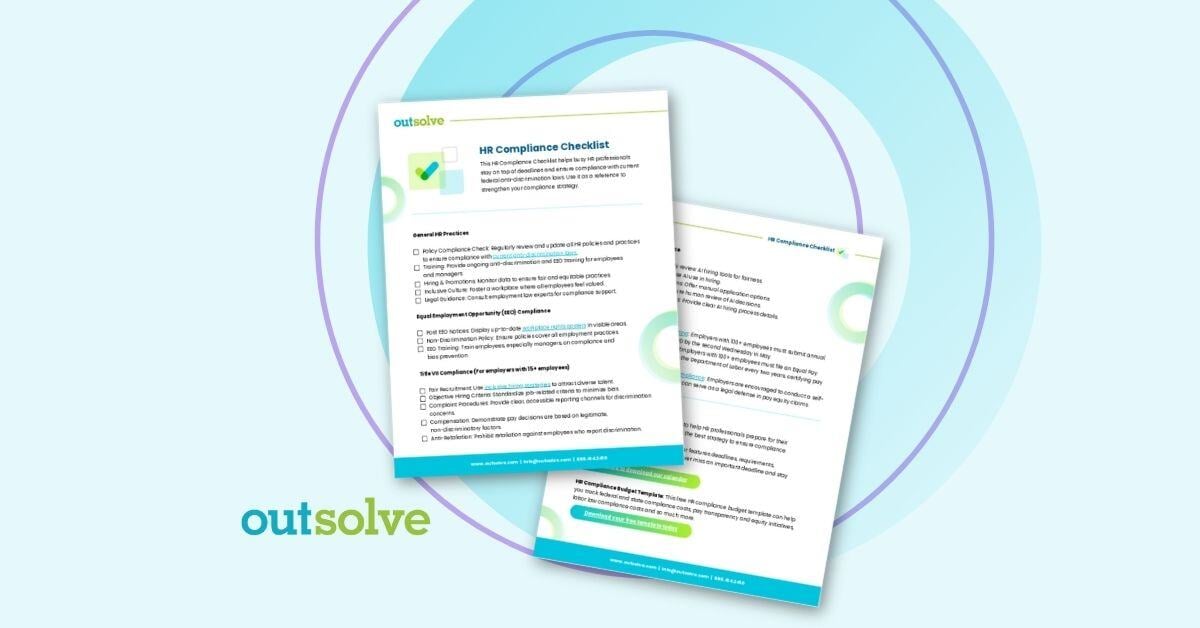6 min read
I-9 Documents: What to Do When Employee Verification Looks Questionable
 Desiree Throckmorton, SPHR
:
Jul 28, 2025 2:25:59 PM
Desiree Throckmorton, SPHR
:
Jul 28, 2025 2:25:59 PM

Flawed I-9 documents can compromise years of otherwise sound compliance efforts, opening the door to legal exposure and financial penalties. Federal enforcement is intensifying under the Trump administration with recent anti-DEI executive orders and evolving immigration policies. Employers are under increasing pressure to validate identity and work eligibility with precision and consistency. Even a single misstep can result in costly fines, reputational harm, or a full-scale audit.
Thousands of I-9 audits are conducted each year by U.S. Immigration and Customs Enforcement (ICE), with fines reaching up to $2,500 per violation. I-9 audits can be triggered by random selection, targeted enforcement, employee complaints, documentation discrepancies, prior violations, industry risk, or negative media attention.
Knowing how to respond to questionable I-9 documents is critical to maintaining compliance. Effective handling reduces the risk of document fraud, minimizes exposure to discrimination claims, and strengthens the integrity of your hiring process.
Why I-9 Document Authenticity Matters
Verifying the authenticity of I-9 documents is a legal responsibility with significant consequences. Accepting fraudulent or invalid documents can lead to civil fines and criminal penalties. While most employers do not intentionally make mistakes, unintentional errors can still lead to serious legal and financial consequences.
Employers must also understand that they are fully responsible for I-9 compliance, regardless of whether the verification is completed by HR staff, hiring managers, or third-party I-9 authorized representatives. Any failure to identify or reject unacceptable documentation is still the employer’s responsibility.
The best way to reduce that risk is through clear procedures, regular training, and a strong ability to spot documentation issues before they become compliance failures. Use OutSolve's I-9 Document checklist to help.
How to Identify Red Flags in I-9 Documents
HR leaders must train their teams to recognize the signs of document irregularities without crossing into discriminatory practices, such as telling the applicant which types of documentation to provide.
Here are key indicators and tools to help you spot issues before they turn into compliance violations.
Look for 5 Common Red Flags
Five of the most common indicators that an I-9 document may not be acceptable:
- Expired documents or work authorization that is no longer valid
- Discrepancies across documents, such as mismatched names, inconsistent document numbers, or conflicting birth dates.
- Low-quality images, such as blurry or smudged ID photos
- Obvious alterations, including mismatched fonts or unclear seals
- Photos do not match the person presenting the document.
While employers are not expected to be forensic document experts, they are required to assess whether documents reasonably appear genuine and relate to the person presenting them.
Train Your Team to Recognize Risk the Right Way
The USCIS Handbook for Employers (M-274) is one of the most comprehensive resources for guiding document verification. It includes visual examples of approved I-9 documents, instructions for handling various scenarios, and guidance on re-verification and corrections. Complement this resource with Internal training sessions and recurring audits, thus reinforcing consistent standards across teams and hiring locations.
Schedule periodic refresher training for all staff who handle employment eligibility verification. Such training consistently aligns staff with compliance expectations and clarifies any procedural updates.
Use Technology to Identify I-9 Document Fraud
Identifying I-9 document fraud requires vigilance in reviewing identity and employment authorization materials. But the in-person review process will not necessarily catch every fraudulent document. Consider the example of a new hire submitting a sibling or parent’s Social Security number during onboarding. At first glance, the documents appear to be valid. The name matches the ID presented, the Social Security number, and other supporting documentation, such as their resume and employment application. The document verification process goes smoothly without raising concerns.
However, a quality HRIS system will flag a mismatch, prompting a closer review. Once the discrepancy is identified, the issue can be quickly escalated, confirmed, and resolved through the organization’s compliance or HR team.
Stories like this are not uncommon, underscoring the importance of using integrated systems that assist in flagging inconsistencies. An integrated system can help reduce your risk of data mismatches on the Form I-9. To appropriately respond to fraudulent documentation, make sure your organization has a clear and compliant process for when something doesn’t look right.
Avoid Discrimination While Ensuring Compliance
Handling questionable documents requires employers to walk a fine line of enforcing compliance without engaging in discriminatory practices. Federal law prohibits employers from rejecting valid documents or treating people differently based on national origin, citizenship status, or perceived immigration status.
To remain compliant, organizations should:
- Apply the same document review process to all employees.
- Avoid requesting additional documentation unless the original submission is clearly unacceptable.
- Use the same process and documentation requirements for every new hire, regardless of their background. Do not over document; this is not allowed and can be considered a red flag during an audit
Over-documentation and inconsistent treatment are two of the most common I-9 mistakes. Make sure your team is trained to recognize and avoid these missteps.
How to Respond When I-9 Documents Raise Concerns
Employers must verify employment eligibility while ensuring their actions do not cross into discriminatory territory. When an I-9 document raises concerns, your staff should follow a documented and compliant process. The key is to act consistently, document each step, and understand where your responsibilities begin and end.
Ask for New Documents Without Violating the Law
Sometimes a document does not reasonably appear genuine or does not seem to relate to the person presenting it. In that case, the employer should inform the employee and allow them to present another option from the Lists of Acceptable Documents. Do not tell the employee which specific document to provide, even if your intent is to be helpful. Doing so may violate federal anti-discrimination laws.
The appropriate response is to explain that the original document cannot be accepted while providing the employee with the official Lists of Acceptable Documents. Make it clear that the choice is theirs and that the new document will be reviewed with the same standard of reasonableness applied to all employees.
Employers should never specify particular documents or request additional documents based on assumptions about an employee’s background, national origin, or perceived immigration status. Applying policies unevenly or over-documenting based on suspicion can create liability.
Know When to Involve Legal, Compliance, or HR Leadership
Not every questionable document situation can or should be handled by front-line staff. HR should escalate the issue internally if concerns persist after reviewing a new document, or if the employee cannot produce an acceptable replacement.
Legal or compliance teams should become involved when:
- There are concerns about potential document fraud.
- The employee disputes the rejection of a document.
- The organization receives conflicting information from internal systems such as E-Verify or an HRIS.
- A pattern of discrepancies emerges across multiple hires.
- The employee does not appear to genuinely relate to the documents.
- Documents are expired or do not appear to be eligible to substantiate employment authorization or identity.
Involving internal counsel helps ensure the organization’s response is compliant and defensible. Escalating to counsel also demonstrates that you are acting in good faith and following established escalation procedures, which is particularly important in the event of an audit or investigation.
Finally, document every action, including dates, personnel involved, and employee communication. Keep these notes in a confidential file, separate from the I-9, to preserve privacy and audit readiness.
Tools and Guidance for Verifying I-9 Documents
With the right resources in place, your HR and compliance teams can confidently identify issues and avoid missteps.
What E-Verify Can (and Can’t) Do for Your I-9 Process
E-Verify compares Form I-9 information against records available to the Department of Homeland Security and the Social Security Administration. Using E-Verify is required for certain federal contractors and provides an extra layer of verification.
However, E-Verify will not detect all types of document fraud and does not eliminate the need for a properly completed Form I-9. It is also not a substitute for a thorough review of original documents. Employers must still physically (or remotely, under authorized conditions) examine employment verification documents to determine whether they reasonably appear genuine and relate to the individual presenting them.
Use E-Verify to supplement a well-trained team with a consistent review process, not as a replacement.
Trusted Resources for I-9 Compliance and Training
There are many reliable resources to help employers stay current and make informed decisions during the I-9 verification process:
- USCIS Handbook for Employers (M-274): The definitive guide to completing and correcting I-9s, including sample documents and best practices.
- I-9 Central (USCIS): A publicly accessible resource with FAQs, updates on regulatory changes, and step-by-step instructions.
- DOJ Immigrant and Employee Rights Section: Guidance on anti-discrimination compliance during employment verification.
- OutSolve’s I-9 Compliance Resources: Up-to-date insights and practical guidance tailored to federal contractors and enterprise organizations.
Investing time in these tools and encouraging your team to use them regularly will build the confidence and consistency needed for strong, defensible I-9 compliance.
Take Control of Your I-9 Compliance Journey
Employers face increasing pressure when handling I-9 documents and the consequences for getting it wrong are higher than ever. The risks from unintentional errors or fraudulent submissions include financial penalties, legal liability, and reputational harm.
Being prepared to detect I-9 document fraud requires more than completing a form. It also means knowing how to identify red flags, respond appropriately, and document your process with care. It also means training your team to use the right tools and to bring in experts when needed.
OutSolve helps federal contractors and enterprise organizations navigate I-9 compliance with clarity and confidence. From workforce audits to policy development and training, our team can help you build a stronger, more compliant verification process. Contact us today to learn how we can support your I-9 program.
Desiree Throckmorton is a seasoned HR compliance professional with over two decades of experience, including significant tenure at a Fortune 500 company. In her current role as VP I-9 Operations, Senior Consultant, she provides expert guidance to enterprise-level clients on critical issues such as Form I-9 compliance, non-discrimination analysis, and best practices for pay equity and transparency. Throughout her career, Desiree has demonstrated exceptional proficiency in conducting internal proactive audits and managing external reactive audits. She has a keen eye for identifying risk areas in recruitment practices and excels in performing adverse impact analyses on employment decisions. Additionally, Desiree has successfully launched comprehensive, enterprise-wide training programs focused on Equal Employment Opportunity and Form I-9 compliance. Desiree holds the SPHR certification and has earned a Bachelor's Degree from California State University and a Master's Degree from Roosevelt University.
Weekly OutLook
Featured Posts

New Year, New Deadlines: 2026 HR Compliance Calendar

outRageous HR: Plan Now or Pay Later
Related Posts

In-House or Outsourced I-9 Management: Which Is Best for Your Organization?
Every U.S. employer, regardless of size or industry, is required by law to confirm each new hire’s identity and verify that they are authorized to...

outRageous HR: Building a Compensation Strategy That Actually Works
If your compensation strategy is mostly “gut feeling” plus whatever you did last year… it’s time to rethink your approach.

HR Compliance Checklist: What Every HR Pro Needs to Know
During times of sweeping change to federal laws, and with new state laws being enacted, it's more important than ever for HR professionals to ensure...



